Below are summaries from the National Significant Wildland Fire Potential Outlook, provided by the National Interagency Fire Center, for the period of April 2022 through July 2022. Additionally, the full wildfire outlook can be located here.
Year-to-Date Statistics:
| Year-to-date statistics | Number of Fires | Acreage Burned |
| 2022 (01/01/22 – 04/01/22) | 15,807 | 683,727 |
| 10-year Average (2012-2021) | 9,460 | 454,785 |
| Percentage of 10-year Average | 167% | 150% |
Source: https://www.nifc.gov/fireInfo/nfn.htm
Observations in March:
Fire activity continued to increase in March mostly across the Southern Area, Southwest Area, and the plains of Rocky Mountain Area. Year-todate acres burned for the US is approximately 20% above the 10-year average, with nearly 90% of the acres burned coming from Southern Area, which is not unusual through March.
Most of the West, Plains, and Texas remain in drought, with areas of drought also along the Gulf Coast, in South Florida, and in the eastern Carolinas. Temperatures were mostly above normal on the West and East Coasts, with below normal precipitation across much of the West, northern and central Plains, Texas, and central Appalachians. Most basins in the West are reporting below average snow water equivalent, adding stress to the coming summer and wildfire outlook.
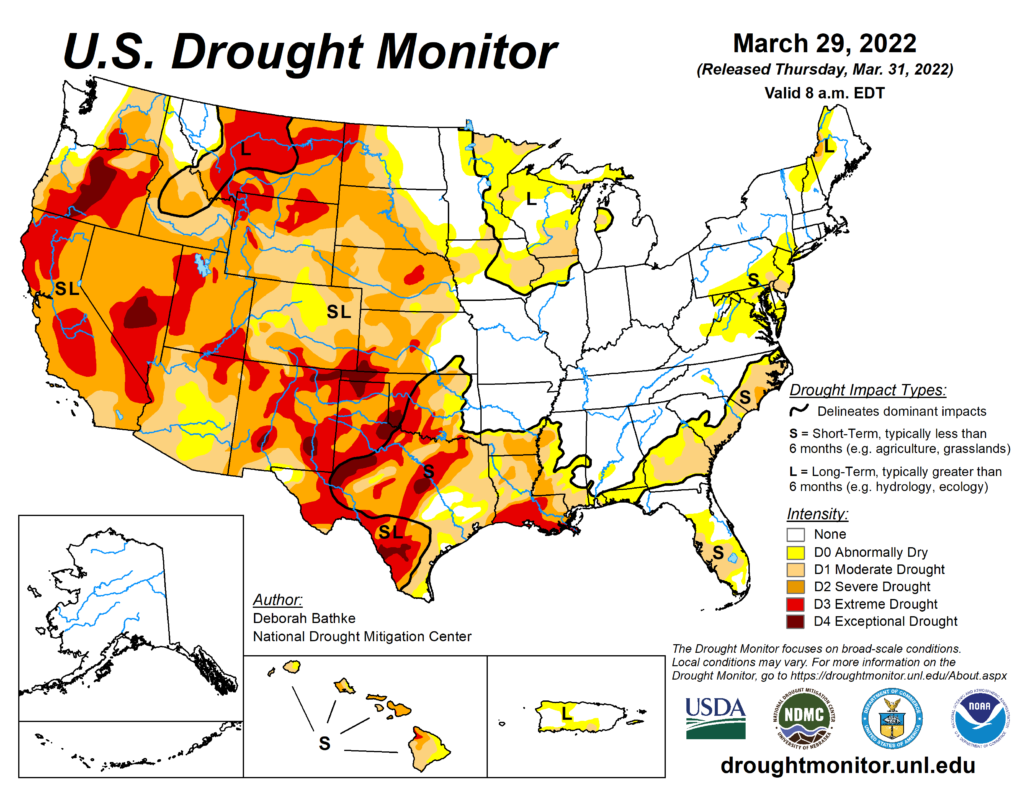
US Drought Monitor Status as of March 29, 2022
Overall, drought continues across nearly 90% of the West and much of the Plains, although a few areas did see improvement, including along the Front Range and High Plains in Colorado and portions of central and eastern Oklahoma. Much of Texas saw an increase and intensification of drought, with areas in Florida, Georgia, and the Carolinas into the Mid-Atlantic mostly observing worsening drought conditions.
Fire activity continued to increase across the Southern Area, with the geographic area now at preparedness level four. Fire activity also continued to increase in the Southwest, California, and across the plains of the Rocky Mountain Area. Generally, periods of increased activity coincided with widespread dry and windy conditions from the Southwest through the Plains, with the most intense critical fire weather conditions of the spring observed on March 29 across the southern and central Plains. Additionally, postfrontal dry and occasionally breezy conditions led to increased fire activity across the Southeast. Overall, nearly half of the Predictive Service Areas in Southern Area are reporting energy release component values near or above the 90th percentile. On March 28, the national preparedness level increased to two due to the increased fire activity and forecast increases of above normal significant fire potential.
Wildfire Outlook for April – July:
Climate outlooks indicate likely below normal precipitation from Texas through the southern Rockies and Great Basin, with above normal temperatures likely across much of the Lower 48 States through spring into summer. Indications for an active severe weather pattern this spring remain from the eastern portions of the Plains into the Southeast and Ohio Valley. For much of the Plains, critically dry and windy periods will accompany the severe weather. For the Southwest region, monsoon season is forecast to arrive on time, but potential early moisture surges during June could result in lightning across the Southwest, Colorado, and the southern Great Basin.
Above normal significant fire potential is forecast across the eastern Carolinas for April and in South Florida through May. As the maps below show, the southern High Plains will retain above normal significant fire potential into July due to anticipated warmer and drier than normal conditions persisting.
Most of the Southwest is forecast to have above normal significant fire potential in May and June, with potential increasing mostly across southern and western Colorado and southern portions of the Great Basin. In the Northwest, above normal potential will likely expand from central Oregon to southwest Oregon and central Washington by July. Above normal significant fire potential is also forecast to increase across northern California from May into July, with rising potential likely along portions of the Sierra Front. Alaska is forecast to have below normal potential in its panhandle through April, with below normal potential expected across large portions of the Interior through May. Leeward locations of Hawaii are forecast to have above normal potential during June and July.
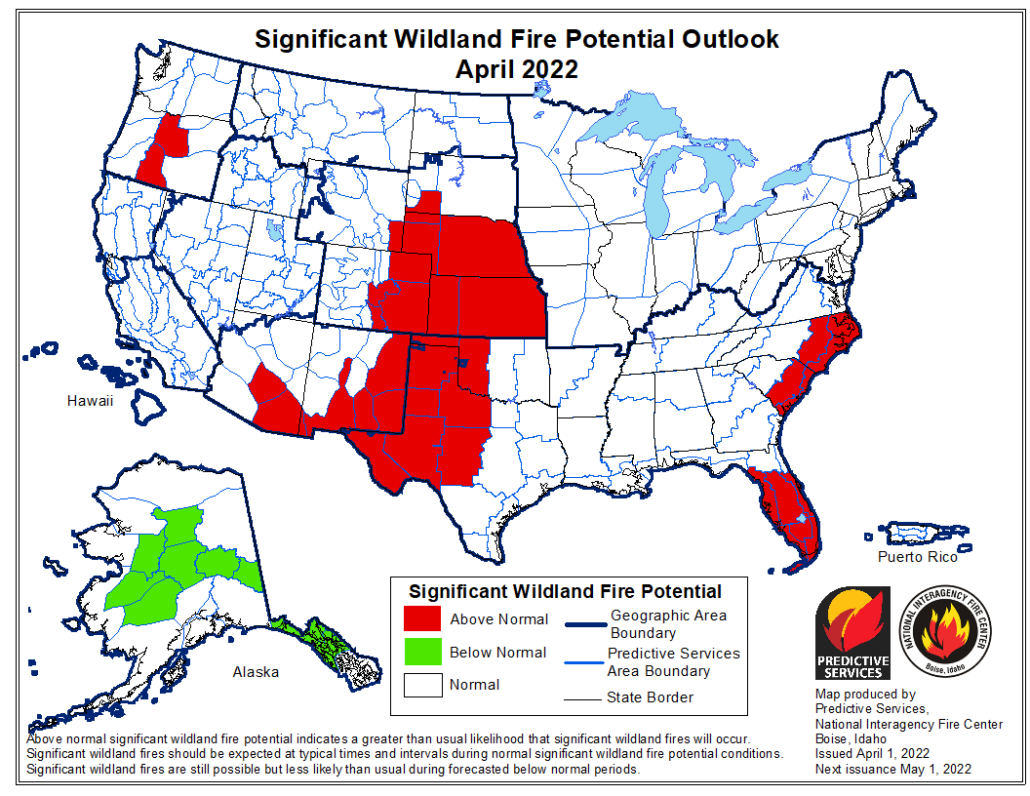
NIFC Predictive Services Fire Potential Outlook for April 2022 as of April 1, 2022
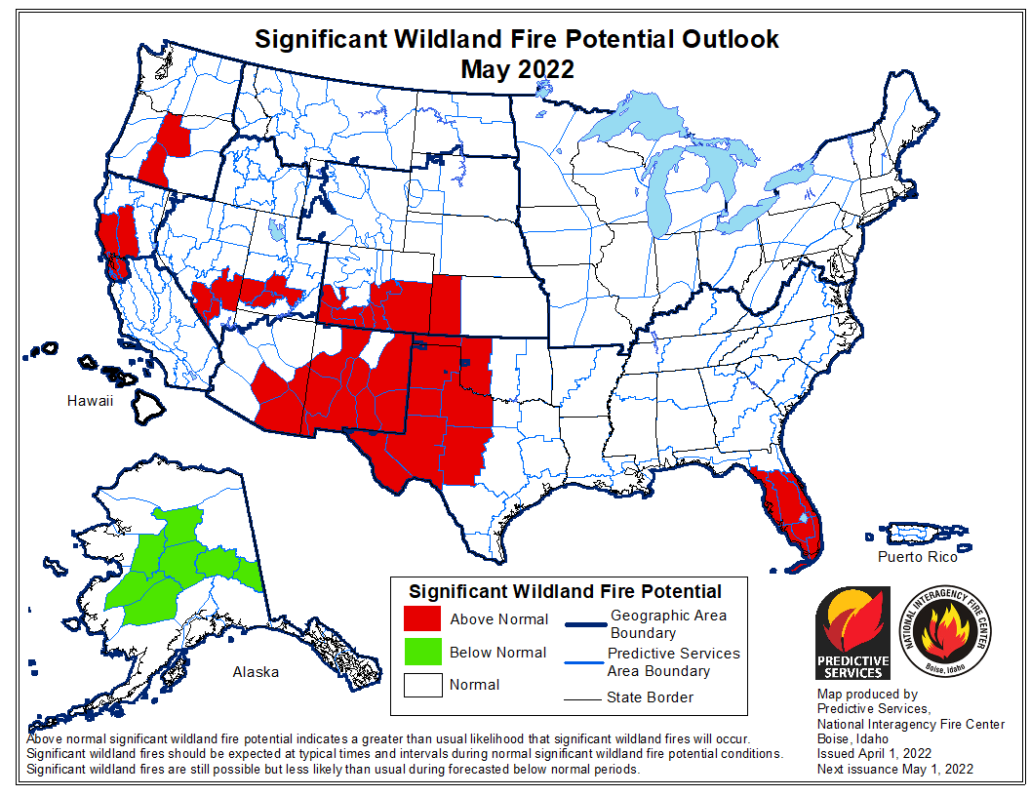
NIFC Predictive Services Fire Potential Outlook for May 2022 as of April 1, 2022
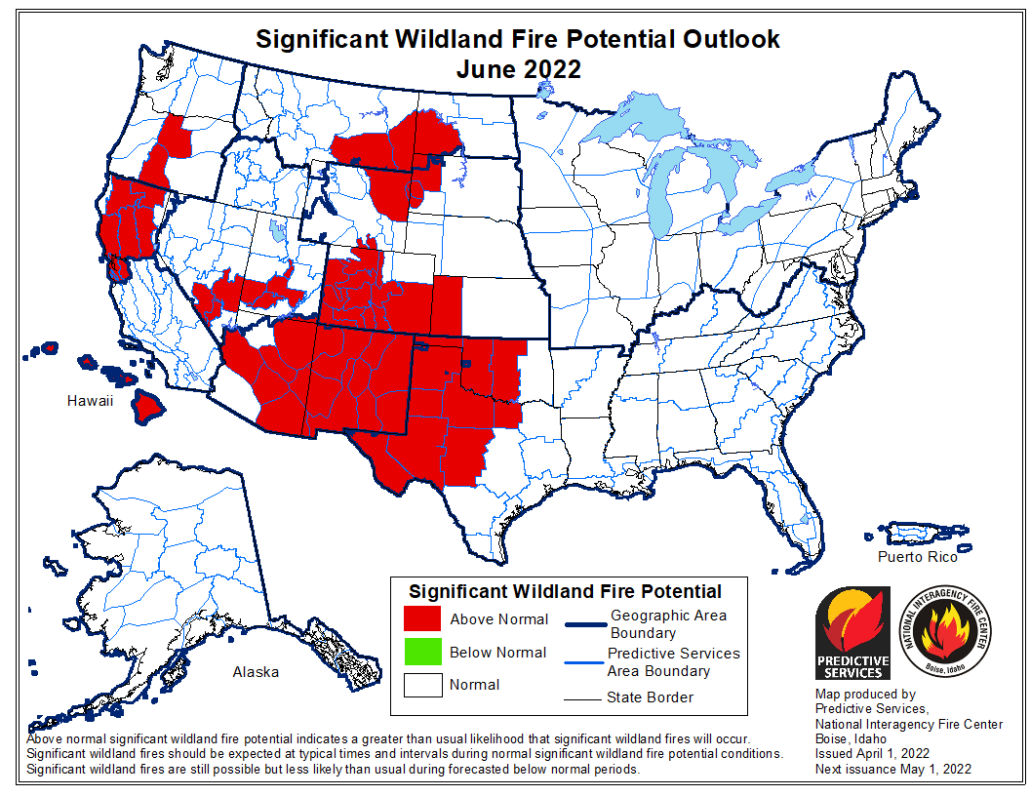
NIFC Predictive Services Fire Potential Outlook for June 2022 as of April 1, 2022
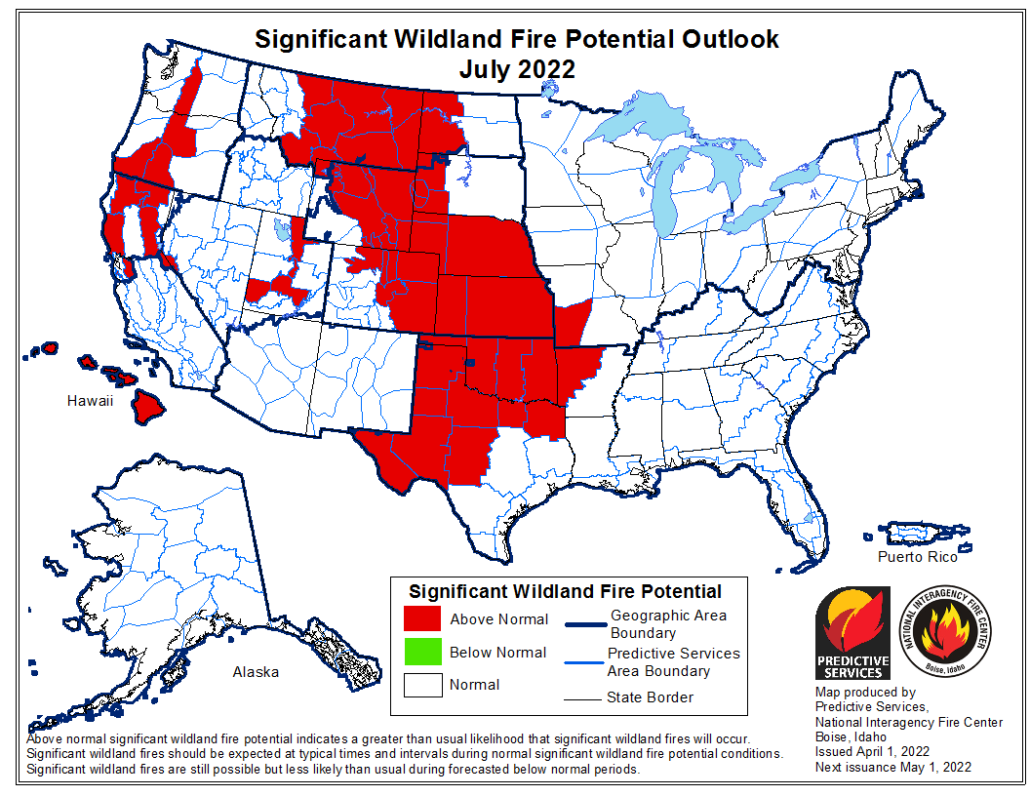
NIFC Predictive Services Fire Potential Outlook for July 2022 as of April 1, 2022
Source: NIFC

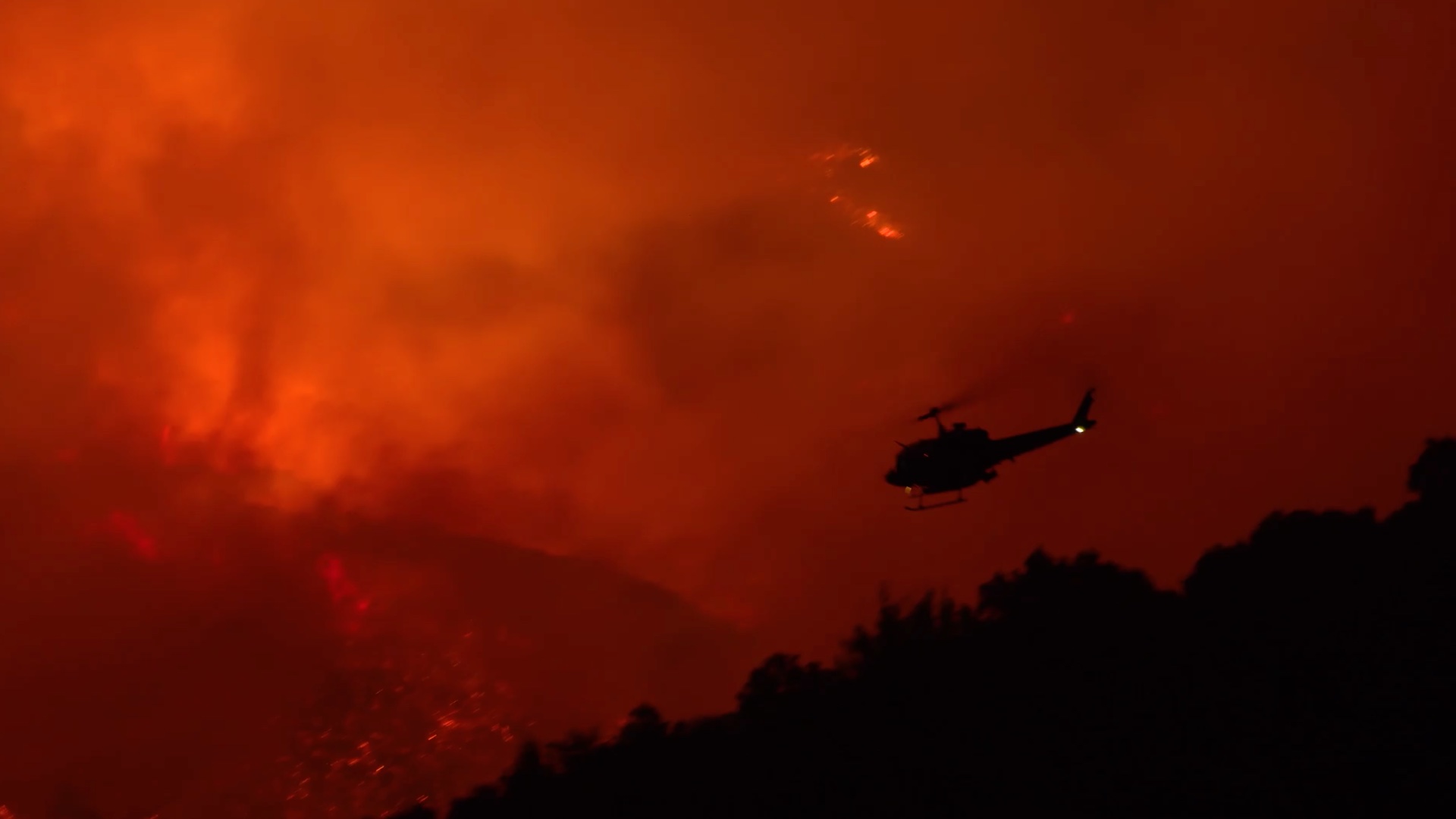



One Comment